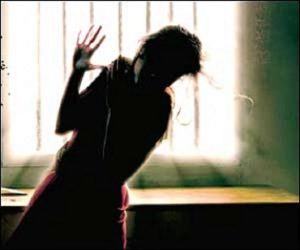THE terrorism market is rather crowded these days. If a group does not face competition from other local terrorist groups, different from itself owing to slight but bloodily fought ideological differences, then they must contend with splinters from their own organisation allied behind competing leaders.
If neither of those is posing a threat, there is the transnational terror outfit to consider; the pressure of having to beat out an internet-savvy Daesh (the militant Islamic State group), with its slick publicity campaigns and its British-accented jihadis, is also formidable. It is no wonder, therefore, that old style terrorist groups like the Tehreek-e-Taliban Pakistan are looking around to step up their tired game, find ways to appeal to constituencies that they may have ignored.
Women, so summarily neglected by the Taliban other than being whipped and stoned and forced into burqas and out of markets, are of these previously untapped constituencies that the TTP has turned to. A new magazine published by the group is titled Sunnat-i-Khaula and aims to try and recruit from among millions of Pakistani women.
The title of the magazine comes from the name of a female fighter who lived during the time of the Holy Prophet (PBUH). Its content includes an ‘advice’ column which calls upon believing women to distribute literature regarding the obligation of jihad, arrange physical training classes for sisters, operate simple weapons and also learn the use of grenades. In another part of the magazine, an interview with the wife of TTP commander Fazlullah is featured. The woman, who married at the age of 14, extols the virtues of early marriage.
It is now the turn of Pakistani women to be targeted and they may well be sitting ducks.
In the views of most Taliban experts, the magazine is proof of the fact that the Taliban feel they may be lagging behind in recruiting female foreign fighters. Since its release, chatter around the magazine on social media has likely ensured that many Pakistani social media users have been introduced to its contents. As terrorism experts have recently discovered, it is young people (and now young women) from middle-class homes with access to the internet who are most at risk for accessing and then being persuaded by the propaganda.
It is undoubted that the TTP is taking a page out of the Daesh playbook with the launch of this new magazine. Long uninterested in resurrecting the legacies of female warriors from early Islamic history, they seem to have suddenly realised the value of even small numbers of women coming into their ranks, operating social media accounts, spreading propaganda and of course learning how to actually fight using simple weapons and grenades.
Daesh began their spirited recruitment of women long ago; if the Taliban have settled on Khaula as a means to reinterpret views that have opposed the presence of women on the battlefield, they did the same with Nusaybah Bint Ka’ab who fought in the Battle of Uhud, alongside her family. She sustained wounds, carried a shield and a sword and even wounded a man who had injured her son. With the help of such examples, often misrepresented to fit in with militants’ own propaganda schemes, the terrorist groups hope to rope in young women who want a different kind of life than the rigid gender roles available in middle-class Pakistani society.
It is a clever scheme. In the case of Daesh, its success has already been proven. Ever since the group gained ascendance in 2014, it has made recruiting women a fixture of its efforts. Daesh’s Al-Zawra School for female recruits demonstrates how this principle works in practice. The school’s mission statement is for women who are “interested in explosive belt and suicide bombing more than in a white dress or a castle”. Breaking with the religious, it engages in the sort of historical reinterpretation, the fitting of old stories with new political and territorial ambitions, that both groups otherwise insist is un-Islamic. Anything, it seems, is permissible if done by those who want to kill to prove their point, to gain power.
The TTP’s new direction in recruiting women is one that requires the urgent and pressing attention of counterterrorism agencies in Pakistan. Research on the Daesh propaganda geared towards women is already throwing out earlier assumptions that the women involved are naïve, ‘jihadi brides’, lured into fighting by men. The girls and women going into the ranks are lured instead by promises of a kind of empowerment, freedom from rigid domestic roles, promises of using small weapons and grenades, and most importantly to follow a tradition, that has been distorted, of Muslim female warriors.
Dealing with the terrorist recruitment among young men has not been easy in Pakistan. The structural problems of unemployment, transforming demographics, coupled with the easy connectivity of social media among the middle classes, has meant that impressionable or angry or even curious youths have all been caught in the fold, convinced somehow to kill thousands of others.
Now it seems that it is the Pakistani women’s turn to be targeted and they may well be sitting ducks, even more vulnerable to terrorist propaganda than their male counterparts. Not only are they more isolated, subject to strictures on their movement and activity, but the inflexible demands of marriage and motherhood impose a sense of doom on the futures of many among them. There is no doubt that many of them or some of them will fall prey to this next step of terrorist recruitment, believing in the false promise of empowerment, imagining a murderous life as that elusive ‘different’ life that they so crave. Saving them may require much more than only military operations; it will require actually changing things for women in the country, delivering the real empowerment that exposes this other kind as the sickening and murderous lie that it is.


